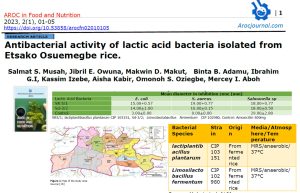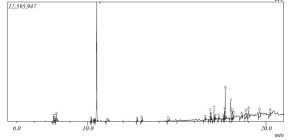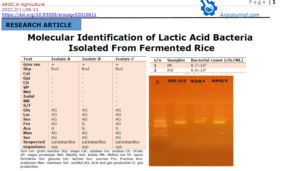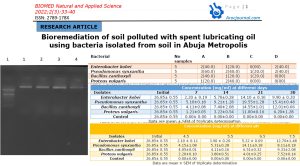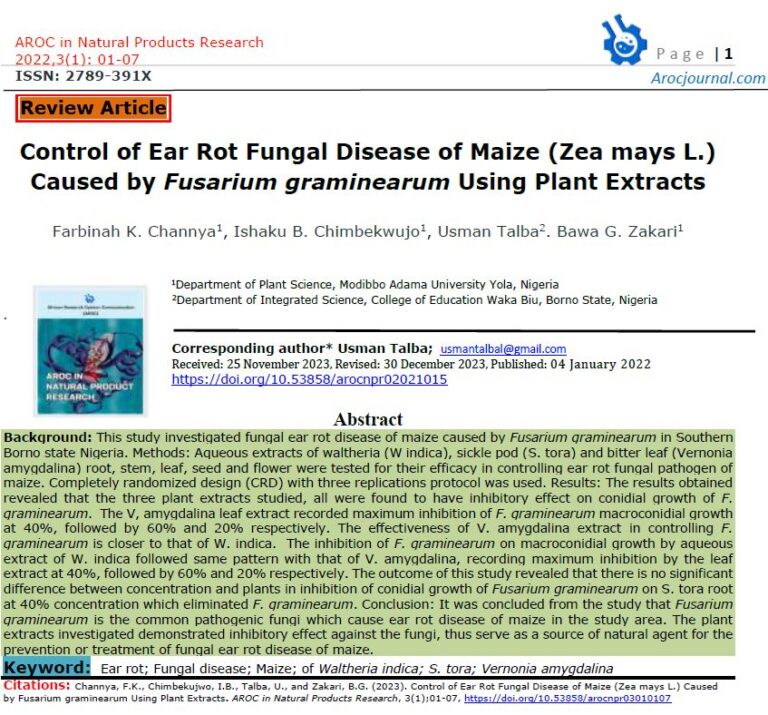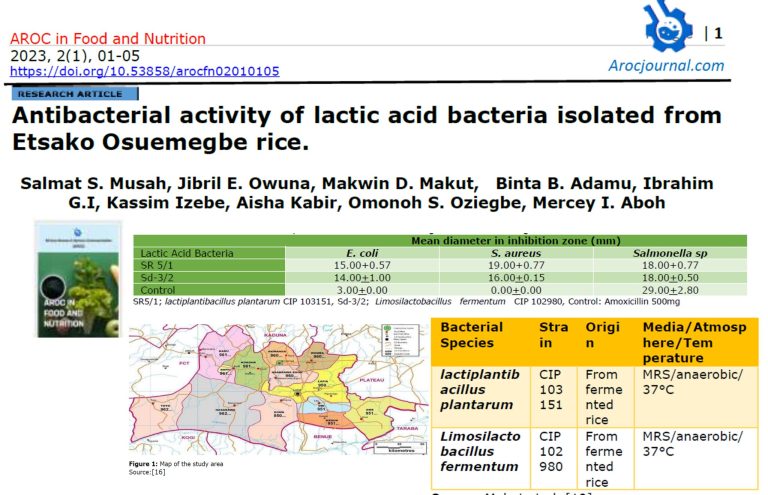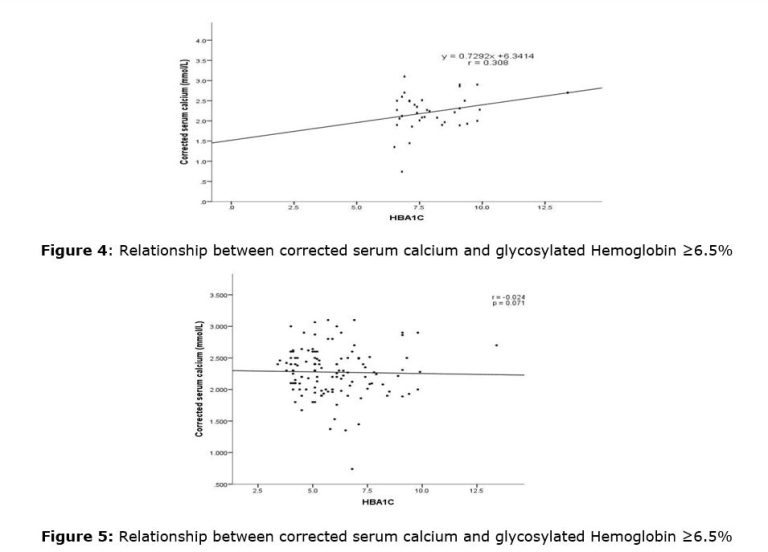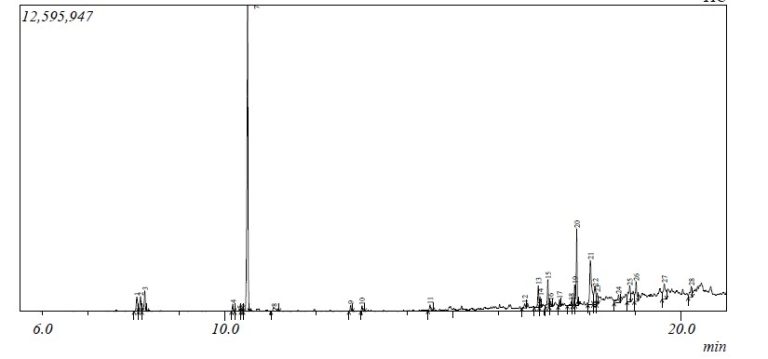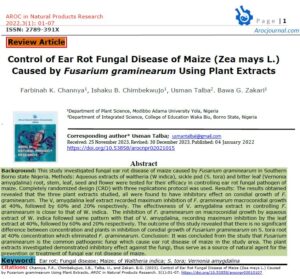
Prevalence and antimicrobial susceptibility pattern of coagulase-negative staphylococci obtained from nares of adult patients admitted to Ahmadu Bello University Teaching Hospital (ABUTH), Zaria
AROC in Pharmaceutical and Biotechnology, 2021,1(1);34-43
- Author(s): Cecilia T. Atolagbe, Babajide A. Tytler, Olanrewaju Jimoh, Adebola T. Olayinka, and Busayo O. Olayinka
- August 3, 2021
- Keywords - Coagulase-negative staphylococci (CoNS); methicillin-resistant – coagulase-negative Staphylococci (MRCoNS); multiple antibiotic resistance index (MARI); antimicrobial agents
Abstract
Coagulase-negative staphylococci (CoNS) are part of the normal microbial flora of the skin and mucous membranes. Nasal colonization with antibiotic-resistant CoNS represents both a risk factor for the colonized individual and their immediate contacts. This study determines the antibiotics susceptibility pattern and resistance phenotypes to a specific group of antimicrobial agents in CoNS isolate from the nares of adult patients from Ahmadu Bello University Teaching Hospital (ABUTH), Zaria, Kaduna State, Nigeria. One hundred and twenty-three presumptive staphylococci isolate from nasal colonization surveillance cultures of adult patients were collected from the diagnostic medical microbiology laboratory of ABUTH, Zaria and were characterized using standard microbiological procedures and their susceptibility to commonly used antimicrobial agents determined using the guideline of European committee on antimicrobial susceptibility testing (EUCAST). A total of 60 of the 123 (49%) staphylococcal isolate were CoNS. Characterization of the sixty CoNS isolate showed that the most predominant species were S. chromogenes (30.0%), S xylosus (15.0%) and S. schleiferi subsp. coagulans (13.3%). The highest level of resistance was observed to Cefoxitin (95.0%) and the lowest to Tigecycline (1.7%). S. epidermidis isolates were observed to show ≥60% resistance to all tested antibiotics with the exception of Tigecycline (0%) and Gentamicin (20%). Analysis of the multiple antibiotic resistance index (MARI) showed that majority (96.7%) of the isolates were resistant to 3 or more of the antimicrobial agents. No isolate was resistant to all the tested antimicrobial agents. A very high proportion of the CoNS isolates were resistant to cefoxitin, penicillin, tetracycline, amoxicillin-clavulanate, and vancomycin. In conclusion, the high proportion of isolates with MARI of 0.3 and above indicates a high level of antibiotic use or exposure in the study area. These findings revealed the need for continued surveillance for resistant phenotype to inform clinical therapy decisions.
Corresponding Author(s)
Cecilia T. Atolagbe;
Mobile- +2348062451129;
Email: olaoyececilia2014@gmail.com;
https://orcid.org/0000-0002-9980-9090
Citations
Atolagbe, C.T., Tytler, B.A., Jimoh, O., Olayinka, A.T., and Olayinka, B.O. (2021). Prevalence and antimicrobial susceptibility pattern of coagulase-negative staphylococci obtained from nares of adult patients admitted to Ahmadu Bello University Teaching Hospital (ABUTH), Zaria. AROC in Pharmaceutical and Biotechnology, 1(1):34-43


